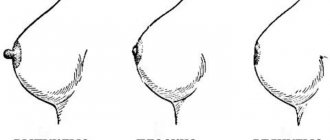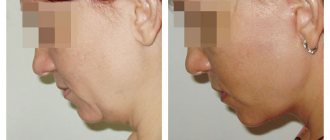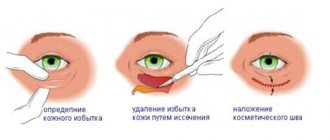Women's breasts, according to many men, are one of the most attractive parts of a woman's body. Ideal breasts, the object of many women's desire, are ideal in every way. It is not only the right size, optimally in harmony with the body, but also a neat shape, symmetrical arrangement and much more.
Beautiful, aesthetically attractive nipples are another component of ideal breasts. Moreover, the beauty of nipples is a complex concept. Just like the breasts, this is a normal shape and correct location, natural color and so on.
Modern plastic surgery offers a huge number of different operations. Among them there is nipple plastic surgery. Recently, this operation has become very, very popular. However, it should be noted that the popularity of this intervention is due not so much to the desire to achieve the ideal in everything, but to fashion.
Not long ago, Western countries were swept by the fashion for highly transparent clothing. Of course, such clothes must match - and girls began to turn en masse to plastic surgery clinics to correct their areolas and be able to wear a transparent top with pleasure and pride.
Currently, the number of patients wishing to have their nipples corrected has approximately quadrupled. Looking at trendsetters or Hollywood celebrities, ordinary women also want to do without underwear and wear revealing things. And not just to wear, but also to look as attractive as possible in them.
Indications for correction of areolas and nipples
The shape of the nipple or the size of the areola is individual, but the optimal width of the nipple is about 1 cm, the diameter of the areola is 3.5-4 cm. Any deviations can cause psychological discomfort and a feeling of inferiority. In some cases, in women, the irregularly inverted shape of the nipples does not allow normal feeding of the child.
The size of the areola or structural features of the nipples may exist initially, but sometimes deviations are a consequence of previous diseases or pathological conditions. In a woman, this is observed in the following cases:
- history of abscess or mastitis;
- breast-feeding;
- incorrectly selected bra;
- mammary cancer;
- the result of mastoptosis in women;
- consequences of gynecomastia in men;
- some genetic pathologies;
- the result of injuries and operations when connective tissue develops in excess.
Most often, women come to see us about an inverted nipple that does not protrude above the surface of the breast, a thickened nipple, a large areola or its asymmetry on different glands.
An inverted nipple is often a leading symptom of breast cancer. Therefore, surgical treatment cannot be performed until a dangerous diagnosis is excluded.
There are contraindications for surgery to correct inverted nipples and abnormal areola size:
- malignant breast tumors;
- mastopathy;
- acute infectious diseases;
- bleeding disorders;
- severe pathologies of the cardiovascular system;
- diabetes;
- age under 18 years;
- pregnancy;
- incomplete lactation.
Some contraindications are relative; if the condition improves, the operation can be performed later.
What can be changed with surgery?
Often, patients seek the help of a plastic surgeon if they are not satisfied with the shape of their nipples - for example, they are too retracted or even flat. But often women also have normal erect nipples and just want to make them even bigger.
Another popular request is asymmetry correction. In general, it is worth saying that nipple asymmetry is normal for most women. But celebrities with perfect breasts and equally perfect nipples set the bar very high. Many women want to look as attractive as the stars.
After childbirth, nipples usually change color, becoming darker. In this case, patients are asked to lighten their areolas. Sometimes the areolas can also stretch; in this situation, the plastic surgeon can reduce their size and make the overall appearance of the areolas more neat and aesthetic.
Types of surgery to correct areolas and nipples
The type of surgical intervention is selected depending on the condition of the nipple-areolar complex and the goals set. Women with large nipples undergo surgery to reduce them. This will be done in the following ways:
- with a long, elongated nipple, its middle part is removed, and the top is returned to its place or only the upper part is removed;
- if the nipple is thick, a third is removed wedge-shaped and the edges of the wound are sutured together.
Correction of an inverted nipple is carried out in two ways. In the first case, after the operation, the woman will be able to breastfeed. To do this, incisions are made around the indentation, and with the help of a microscope, areas of connective tissue that pull the nipple down are detected. They are stopped and given the correct breast shape.
When correcting in the second way, the retracted area is brought up, the tissue is cut across and part of the gland that pulls the nipple down is removed, the lower part is strengthened. With this method of correction, subsequent lactation is impossible, because The milk ducts are damaged. Therefore, it is used only in women who do not plan pregnancy and breastfeeding.
Correction of the areola size is carried out internally and externally. In the first case, a special technique is used that does not affect the skin. The result is natural, and the seam is almost invisible. In the second case, the operation is performed by removing excess areola tissue from the outside, at the border with the skin. After this, a barely noticeable scar remains, which completely disappears over time.
Who is indicated for mammoplasty through the areola?
The main indications for which mammoplasty through the nipple may be recommended:
- dissatisfaction with small breast volume;
- the desire to restore the volume and elasticity of the mammary glands after pregnancy or weight loss;
- asymmetry of the shape and size of the mammary glands;
- tubular mammary glands;
- large areola diameter;
- slight sagging of the breasts (ptosis of the 1st-2nd degree);
- desire to replace previously installed implants with new ones.
Mammoplasty through the areola is suitable for young nulliparous girls who plan to breastfeed their child in the future, and for women after childbirth who want to regain their beautiful shape and do not exclude further lactation. Breast augmentation through the nipple does not affect the glandular tissue at all and does not interfere with feeding functions.
Preparing for surgery
Areola correction is a minimally invasive procedure, but it requires preparation. To do this, a general blood and urine test is prescribed to find out about the level of hemoglobin and the condition of the body. A biochemical blood test, a coagulogram, which reflects the level of blood clotting, is required. All patients need to be tested for syphilis, HIV infection, hepatitis B, C, which are transmitted through blood.
In preparation for areola correction, it is necessary to perform an ultrasound of the mammary gland, and for women over 40 years of age and in some special cases, the doctor prescribes mammography.
Preparation for surgical correction includes maintaining a healthy lifestyle and stopping medications that affect blood clotting to reduce the risk of bleeding after surgery. If you cannot stop taking medications, you should notify your doctor.
The recommended time for surgery in women is the first half of the menstrual cycle, after the end of menstruation. Men can undergo breast areola correction at any convenient time.
The day before surgery you do not need to follow a special diet or restrict yourself, but it is not recommended to drink alcohol. Further preparation depends on the type of anesthesia. If local anesthesia is used, it is enough just not to smoke before the procedure. Those who will undergo the intervention under anesthesia must refuse food 8 hours before the operation.
What do surgeons say?
With the exception of damage to the milk ducts in some techniques, this operation does not produce any serious consequences or complications. The only nuance important for the patient’s future is the exact answer to the question, does she plan to give birth and breastfeeding in the future or not?
However, you should not blindly follow trends. If the desire to enlarge or correct the nipples is dictated only by fashion, you should stop and think carefully about whether this operation is really necessary? Maybe it's better to love yourself and your body, regardless of fashion standards?
But if the patient’s desire is based on deep dissatisfaction with herself and her appearance, and the operation will obviously help achieve psycho-emotional comfort and increase self-esteem, then you should not refuse the help of plastic surgery.
How is the operation performed?
Breast areola correction takes place in the operating room under sterile conditions. The area of the mammary glands is treated with antiseptics. If local anesthesia is used, you must tell your doctor if you are allergic to it.
An anesthetic solution is injected into the breast tissue using a thin needle. A few minutes later the operation begins. All stages of the procedure take approximately 1 hour. After applying a sterile dressing, the patient can rest for a while and leave the clinic.
If the correction of areolas and nipples is performed under anesthesia, after the operation you need to lie down in the ward for several hours. You can leave the clinic on the same day or the next day. But you cannot drive a car on the day of surgery.
Cost of breast augmentation through areola
The price of breast augmentation starts from 300,000 rubles if you choose round implants, and from 320,000 rubles if you choose teardrop-shaped implants (Motiva Ergonomix). The total price includes:
- consultation with an anesthesiologist;
- anesthesia;
- operating consumables;
- implants;
- a day of hospital stay (room and meals);
- postoperative observation, dressings, suture removal;
- supervision of the surgeon during the entire rehabilitation period.
The cost of the operation is calculated individually. It depends on the type and shape of the selected implants, the surgical technique and other nuances that the doctor will tell you about at the preliminary consultation.
Rehabilitation after surgical correction of nipples
If the operation did not include other interventions to correct the mammary gland, then rehabilitation is easy. To reduce the risk of complications, it is necessary to change the sterile dressing daily and treat the wound with an antiseptic. To avoid injuring your breasts, you need to wear comfortable underwear and clothes that do not restrict movement.
During the rehabilitation period, it is not recommended to sunbathe in the sun or visit a solarium, take hot baths, swim in open water, or apply cosmetics to the wound area.
Wound healing occurs on average within a week, after 7-10 days the postoperative sutures are removed. The scar during this period is red, but gradually it lightens and becomes invisible.
If breast swelling persists, pain or other discomfort occurs, you should consult a doctor. At Kinika Mammology, the areola and nipple are corrected surgically for aesthetic and medical reasons. The price of correction depends on the type of pathology of the areola or nipple and is discussed during an individual consultation. To get a consultation or make an appointment with a doctor, just call the phone number listed on the website or fill out the feedback form.
Postoperative period
You will be discharged from the hospital on the 2nd day after the operation. After 3-4 days, depending on how you feel, you will be able to return to work. In the first week you need to come to the surgeon for examination 1-2 times, then 1 time every 2 weeks during the first month, and finally 1 time in the next 3-4 weeks. You will need to wear a special compression cuff for 2-3 weeks after surgery. For the first 10 days, it is advisable to sleep on your back.
You can take a shower no earlier than 6-7 days after plastic surgery - just before that, your external sutures will be removed. The scars will appear pinkish for the first 3-4 months and then disappear. The aesthetic result appears 3-4 weeks after surgery. The final result depends not only on the skill of the surgeon, but also on the health of the patient and how carefully she follows the doctor’s instructions.
FAQ
How soon after surgery can I return to work?
The surgery to reduce areolas/reshape nipples is simple, and therefore requires relatively little recovery time. You can return to work in two days. In this case, for two to three weeks (this is exactly how long it takes for complete healing), the woman should limit physical activity - during this period it is strictly forbidden to lift weights.
Can inverted nipples be corrected non-surgically?
There are alternative techniques, such as vacuum correction, the use of special overlays, as well as contouring (the use of hyaluronic acid) and the introduction of the patient’s own fat (lipolifting). However, none of the listed methods guarantees 100% effectiveness. At the moment, surgery is the only effective method for radical correction of inverted nipples.
II. Malignant tumors
Breast cancer is a fairly common cancer. Malignant lesions of breast tissue are diagnosed in more than one million women every year.
One of the ways to treat this disease is surgery in combination with radiation and chemotherapy. In most cases, only with this approach can your attending physician guarantee you a positive result and an improved quality of life.
Is it possible to be cured without surgery?
Of course, it is quite natural for every patient to want to be cured using a conservative method. And the first reaction to the doctor’s words about the need for surgical intervention is the question of the possibility of drug blockade and destruction of the disease.
If you and your loved ones are still tormented by doubts, you can get rid of them by using our “Doctor’s Second Opinion” program. A representative of the Scientific Department of the Taganka Mammology Center will meet with you and help you figure out exactly what to do in your situation.
What types of surgeries are there to remove breast cancer?
If back in the eighties of the last century, oncological surgeons performed surgical interventions, completely removing the breast, now there are a huge number of techniques that allow preserving the maximum volume of healthy tissue, appearance and structure, and functional activity of the mammary gland. This type of operation is a priority among our clinic’s doctors when working with patients.
Thus, the category of organ-preserving operations carried out in the center includes:
• Lumpectomy is a surgical procedure in which only the part of the breast affected by the tumor and a small amount of healthy tissue are removed. Conditions: the tumor is located only in one mammary gland and does not exceed 4 cm.
• Quadrantectomy is an operation during which the fourth part of the breast containing the tumor is excised. In this case, axillary lymph nodes of levels I-III from the axillary fossa are also subject to removal.
In some cases, when the risk of developing cancer reaches 51% or more, the patient may be offered a mastectomy. This is a surgical procedure in which the oncologist removes the mammary gland, pectoralis minor muscle and third-level lymph nodes.
There are several different mastectomy procedures:
• Subcutaneous. It involves complete excision of the mammary gland with lymph nodes located in the subscapular, subclavian and axillary regions. However, the nipple area and areola remain intact;
• Bilateral. An operation in which both mammary glands are removed;
• by Patey. Excision of the mammary gland, tissue in the armpit and part of the pectoral muscle;
• according to Madden. Removal of the mammary gland together with the lymph nodes of the armpit;
• according to Pirogov. Excision of the mammary gland for lymphocele, when cancer is detected at stage 1 or 2;
• Radical (Halstead method). All muscle groups of the mammary cavity, axillary lymph nodes, fiber and the breast itself are removed;
• Radical extended. Excision of all muscle groups, mammary glands, lymph nodes and breast skin;
• Hemimastectomy. Removal of half of the fat and glandular tissue;
• Lymphadenectomy. Removal of half of the fat and glandular tissue while preserving the muscles.
It is worth noting that the choice of type of operation largely depends on the stage of the disease, the presence of metastases in regional lymph nodes, the size of the tumor node, the size of the breast, as well as the age, general health and wishes of the patient.
How to prepare for surgery?
An operation to remove malignant lesions of breast tissue is a serious surgical procedure that requires both physical and psychological preparation. All conditions have been created for this at the Taganka Mammology Center.
Thus, we carry out any types of necessary preoperative diagnostics using the latest generation equipment made in America and Japan. The data obtained allows us to accurately determine the location of the tumor, its size, and the presence of metastases.
We also have our own medical laboratory, where you can take tests and get results in the shortest possible time. In addition, from the moment you contact us, a highly qualified psychologist will begin working with you, whose main task is to help you restore your mental balance. Cancer is a consequence of stress, and the lack of balance between excitation and inhibition of the nervous system can cause the ineffectiveness of the measures taken, and, as a result, the appearance of metastases even after surgery.
In addition, you will be asked to undergo a series of antihomotoxicological procedures that will allow the body to replenish the loss of strength that is so necessary before the operation. The goal of this program is to set the body up for rapid recovery.
Conditions for the operation
The Taganka Mammology Center is an organization that has been one of the leading clinics specializing in working with cancer patients for more than twenty-two years. We guarantee our patients treatment exclusively under sterile conditions, because this factor plays an important role both during the operations themselves and during the organization of the postoperative period.
In addition, during the entire course of treatment you will be under the supervision of our oncology surgeons, highly qualified specialists trained in the best clinics in Russia, Europe, the USA and Japan.
All of our employees also attend weekly seminars on how to properly work with patients, in particular, how to support them and guide them on the path to recovery.
The advantage of the Breast Center on Taganka is also the presence of its own hospital, where you can choose the class of ward (one-, two-, three-bed) for your further stay.
How are the operations (mastectomy) performed?
When a patient enters the operating room, an anesthesiologist-resuscitator begins working with her, having previously chosen the method of administering anesthesia (intravenous, endotracheal or combined) and calculated the dosage required for the patient.
Please note that when preparing calculations, the doctor takes into account both the individual characteristics of the person being operated on (for example, weight) and the estimated time of the operation. In addition, he preliminarily conducts a drug tolerance test.
The responsibilities of the anesthesiologist-resuscitator during surgery also include constant monitoring of ECG, blood pressure and pulsometry.
At the second stage of the operation, the surgeon begins to work with the patient. He marks her breasts and makes incisions 6-8 centimeters from the tumor. Next, the large and small breast muscles and fatty tissue are separated from the mammary gland. After this, the pectoralis minor and major muscles, tissue and lymph nodes are removed, and then the adipose tissue is cut out.
At the third stage of the work, sutures are applied, a drainage tube is inserted through a special incision, with the help of which fluid is drained from the wound area.
The duration of the operation is from 2-3 to 5 hours.
Breast reconstruction
Oncoplastic breast resection is a resection of the breast for cancer using plastic surgery techniques to restore the shape, volume and consistency of the gland.
This operation can be performed either on the same day as the removal of the cancerous tumor, or delayed, over a period of several months to several years. It is worth noting that these manipulations do not pose a threat to the patient’s life. Scientists have long proven that the survival rate of those who underwent surgery and those who refused it is absolutely the same.
The main methods of breast reconstruction are:
- thoracodorsal flap transplantation (TDF) - the material for reconstruction is the skin of the back;
- TRAM flap – the material for reconstruction is a flap based on the rectus abdominis muscles.
The use of these techniques is the key to achieving a good aesthetic result that meets the patient’s needs.
How to quickly return to everyday life?
An equally important issue when returning the patient to everyday life is the issue of rehabilitation.
The Taganka Mammology Center is a developer of unique programs, which include both classical methods of influencing the body and non-traditional ones. This comprehensive approach allows for rapid recovery of the body, as well as returning you to inner peace and improving your quality of life.
What is included in the rehabilitation program?
- Carrying out detoxification and drainage of the body (including after chemotherapy and radiotherapy) from decay products.
- Strengthening (defenses) of the body's immune system.
- Work on the cause of the disease.
- Maintenance therapy.
- Restoration of the nervous system.
- Restoration of acid-base balance.
- Elimination of disturbances in the ratio of normal and pathogenic microflora.
- Prevention of the inflammatory process.
What is the cost of the operation?
The cost of surgical intervention is discussed with your attending physician when registering for surgery. It depends on the degree of complexity of the necessary manipulations, the anesthesia chosen by the anesthesiologist-resuscitator, as well as the number of days of hospital stay and the class of the ward itself.
What types of operations are performed at the Taganka Breast Center?
Methods of surgical intervention using special equipment:
- Removal of tumors with laser;
- Cryodestruction;
- Radiofrequency removal.
Methods for surgical removal of tumors and other types of operations:
• Enucleation is an operation in which only the neoplasm is removed, other tissues are not affected;
• Sectoral resection is an operation in which not only the tumor itself is removed, but also part of the healthy tissue adjacent to it;
• Total resection is an operation that is prescribed when tumors grow at a high rate or are suspected of being malignant. It is characterized by the removal of a larger amount of healthy tissue than with sectoral resection;
• Central resection - an operation in which an incision is made along the entire contour of the areola, all ducts are intersected behind the nipple;
• Mammoplasty is an operation to restore the shape and size of the mammary gland;
• Nipple resection is an operation that is performed for nipple adenoma or as a diagnostic step for Paget's cancer. The nipple is resected wedge-shaped, interrupted sutures are applied with thin suture material;
• Lumpectomy is a breast-sparing operation for the treatment of breast cancer. Only tumor tissue and a small part of adjacent healthy tissue are subject to removal;
• Quadrantectomy is an organ-conserving operation during which the fourth part of the mammary gland containing the tumor is excised;
All types of mastectomy - subcutaneous, bilateral, Patey, Madden, Pirogov, radical (Halstead method), radical extended, hemimastectomy, lymphadectomy;
Oncoplastic resection is an operation to restore the shape, volume and consistency of the breast after a mastectomy.
Why should you contact us?
Only we provide specialized training before surgery.
Experience in performing operations of any complexity.
“Doctor’s Second Opinion” program – is surgery necessary?
The operation is guaranteed to be painless - the most modern anesthesia and anesthesiologists with only 10 years of experience.
Comfortable living conditions - choosing a room.
Daily observation after surgery by a doctor of the Scientific Council, an oncology surgeon, and a mammologist.
Opportunity to undergo an individual rehabilitation course after surgery.
Warranty obligations for the operation performed.
Prices
| Type of service | Service cost |
| Surgical correction of breast areolas (retracted, asymmetrical) two sides, category 1 | 40,000 rub. |
| Surgical correction of breast areolas (retracted, asymmetrical) two sides, category 2 | 45,000 rub. |
| Surgical correction of the areolas of the mammary glands (on one side) category 1 | 20,000 rub. |
| Surgical correction of the areolas of the mammary glands (on one side) category 2 | 25,000 rub. |
Show all price
Rehabilitation
The use of general anesthesia and the complexity of the operation require medical monitoring of the woman’s condition for at least 2 days. In the 24-hour inpatient department of the Yusupov Hospital, patients are constantly monitored by qualified medical staff and doctors.
After discharge, the rehabilitation period begins, which lasts up to 2 months. Sutures are removed after 10–14 days. Throughout this period, to avoid complications, it is necessary to follow the recommendations of the oncologist.
To exclude recurrence of breast cancer or timely diagnosis of oncology, it is recommended to visit the attending oncologist in the first year and take tests every 3 months. Later, they visit a specialist once every 6 months.
Advantages of mastectomy at Yusupov Hospital
The mastectomy operation at the Yusupov Hospital in Moscow is performed by a highly qualified oncologist surgeon. The surgery clinic is equipped with operating rooms with innovative equipment, which allows us to be confident in the results and the absence of complications.
Benefits of breast cancer treatment in our hospital:
- own diagnostic laboratory;
- modern methods of hardware diagnostics;
- 24-hour hospital.
Our clinic offers affordable prices for mastectomy with one-stage breast surgery. One operation will remove cancerous tissue and give you beautiful, perfect breasts. The main thing to understand is that mastectomy is the most effective method of treating breast cancer and preventing tumor recurrence.







